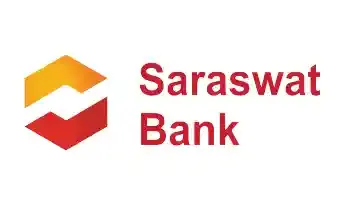Get instant loan offer suitable to your profile !


On this Page:
Learn everything you need to know about education loans before applying. Discover loan types, eligibility, interest rates, repayment options, and tips
Did you know that according to a survey 85 out of 90 Indian students are planning their further education overseas. Not only this, as reported by Public Sector Banks (PSBs), in the last 10 years, a total of 4,61,000 students availed of education loans for studying abroad. Clearly, studying abroad is a transformative experience that opens doors to a world of opportunities and personal growth. However, the cost of foreign education can be a significant barrier for many aspiring students. This is where abroad education loans come to the rescue.
Are you thinking about applying for an education loan to study abroad? To ensure that your loan application isn’t lost in the pool of uncountable applicants and give you a clear starting point. It is important to understand some crucial factors you should know about.

The interest rate is basically the cost of borrowing the money. It is the add-on percentage of money that a borrower must pay back on top of the principal amount borrowed for educational purposes. Depending upon your lender, the rate of interest on a study abroad education loan ranges from 8.85% to 16%.
| Lender | Interest rate |
|---|---|
|
Public banks |
9% - 11% |
|
Private banks |
11.5% - 13% |
|
NBFCs |
12% - 14% |
|
International lenders |
12% - 15% |
How does a 1% difference in interest rate make a huge impact on EMI?
While a 1% difference in the interest rate does not seem significant, when you convert the rate into total interest to be paid over the repayment tenure using the GyanDhan’s EMI calculator, it is exorbitant.
Case study: Let’s say, Rohit, a post-graduate student took an education loan of Rs 30 Lakh at 12%. His EMI was Rs, 43,566 and his total amount payable to the bank including the interest was Rs. 71,84,00. However, he transferred his loan to another bank with 10% interest rate, where his EMI became Rs 40,462. And his total amount payable became Rs. 63,12,000. Can you see the amount that Rohit will be saving. Can you imagine how much money you can save, even with a 2% lower interest rate?

Processing fees refer to the charges or fees that a financial institution or lender may impose when you apply for and process your application for an education loan. This fee is typically non-refundable and is meant to cover the administrative costs associated with evaluating your loan application, verifying your eligibility, and processing the necessary paperwork.
| Lender | Processing fees |
|---|---|
|
Public banks |
Nil to ₹11,800 + GST or refundable |
|
Private banks |
0.5% - 1.25 % + GST |
|
NBFCs |
0.5% - 1 % + GST |
|
International lenders |
Up to 5% of loan amount |

When it comes to choosing between a domestic lender and a foreign lender for study loans, the decision can be quite nuanced and depends on various factors. Let's break down the considerations:
In this case, where both domestic and foreign lenders offer comparable interest rates, there's a compelling argument for choosing the domestic lender. Here's why:
 Currency exchange rate trends: Over the years, the exchange rate between the US dollar (USD) and the Indian rupee (INR) has been volatile. For instance, in 2012, USD 1 was equivalent to INR 45. By 2016, it had risen to INR 60, and today it's over INR 82. This trend suggests that the INR tends to depreciate against the USD over time.
Currency exchange rate trends: Over the years, the exchange rate between the US dollar (USD) and the Indian rupee (INR) has been volatile. For instance, in 2012, USD 1 was equivalent to INR 45. By 2016, it had risen to INR 60, and today it's over INR 82. This trend suggests that the INR tends to depreciate against the USD over time.
 Repayment advantage: If you earn in dollars and borrow from a domestic lender in INR, it becomes more manageable and beneficial to repay the loan in rupees. As the INR depreciates, the amount you owe in USD decreases. Therefore, choosing a domestic lender with a comparable interest rate can be a financially sound decision.
Repayment advantage: If you earn in dollars and borrow from a domestic lender in INR, it becomes more manageable and beneficial to repay the loan in rupees. As the INR depreciates, the amount you owe in USD decreases. Therefore, choosing a domestic lender with a comparable interest rate can be a financially sound decision.
In this scenario, where the foreign lender offers a lower interest rate compared to the domestic lender, it might seem like an obvious choice to opt for the foreign loan. However, it's essential to consider the long-term impact of currency exchange rates:
 Long-term considerations: Fast forward to the year when you have to repay the loan. If you're earning in USD, and the rupee has continued to depreciate, you'll have to repay the foreign lender the entire loan amount in USD. However, for the domestic loan, you still only need to pay back the principal amount in INR, which, due to the rupee's further depreciation, may actually be less in terms of USD.
Long-term considerations: Fast forward to the year when you have to repay the loan. If you're earning in USD, and the rupee has continued to depreciate, you'll have to repay the foreign lender the entire loan amount in USD. However, for the domestic loan, you still only need to pay back the principal amount in INR, which, due to the rupee's further depreciation, may actually be less in terms of USD.
 Hidden cost of exchange rate fluctuations: In essence, the depreciation of the rupee against the dollar can erode the initial interest rate advantage offered by the foreign lender. Even with a seemingly lower interest rate, the foreign loan may turn out to be more expensive when you consider the currency exchange fluctuations.
Hidden cost of exchange rate fluctuations: In essence, the depreciation of the rupee against the dollar can erode the initial interest rate advantage offered by the foreign lender. Even with a seemingly lower interest rate, the foreign loan may turn out to be more expensive when you consider the currency exchange fluctuations.
To make a more straightforward comparison, you can convert the interest rate of the foreign loan into INR. In the example given, a 9% interest rate in USD could be equivalent to a 14% interest rate in INR due to the currency exchange rate trends.

In most cases, education loans from banks have a floating rate of interest as they are linked to the bank’s MCLR (Marginal Cost of Funds based Lending Rate) plus 1.5-2%. Whereas, the interest rate of NBFCs mainly depends on the operating profit of the company. Therefore, the interest rate tends to change according to the prevailing market conditions in India which directly impacts the operating profit of NBFCs. Whereas in the case of banks, the increment is either NIL or less than 0.25%. Always consider the impact of the floating rate on your EMI before you choose a loan.

A lot of students decide to begin squaring off their loan before the scheduled repayment time. The reason is by repaying now, they tend to save on future interest amounts. While the logic is sound, you should consider if the lender charges a prepayment penalty.
The penalty can be free of cost or a 2% to 4% fee when you pay to the lender before the tenure. Knowing the prepayment penalties at the beginning of a loan process helps you plan in advance and choose an education loan scheme that fits you.
Did you know? That banks do not charge any pre-payment penalty after 6 months of the loan is disbursed.

When it comes to education loans, many students are unaware of the tax benefits and exemptions available to them. One of them is section 80E of the Income Tax Act that provides significant relief by allowing individuals to claim deductions on the interest paid towards education loan repayment.
The deduction under Section 80E Chapter vi(a) of the Income Tax Act allows for the total interest paid on education loan EMIs during the financial year. There is no maximum limit on the tax exemption amount on education loans. To claim the deduction, you must obtain a certificate from your bank that clearly separates the principal and interest portions of the loan payment. Only the interest paid is eligible for tax benefits, while there is no tax benefit for the principal repayment.
Note: Tax benefits are only available for education loans secured from banks.

Repaying a loan is a long-term commitment, lasting up to a decade and a half. Ponder over two elements before selecting the time period suitable for you:
 The total interest: For longer tenures, the total interest repayment is higher.
The total interest: For longer tenures, the total interest repayment is higher.
 Your expected income: The EMI of the study loan should not exceed what you can comfortably repay in the future.
Your expected income: The EMI of the study loan should not exceed what you can comfortably repay in the future.
However, we at GyanDhan strongly recommend calculating your total interest and difference in EMIs per month before you select your repayment tenure.
Here’s a simple example: If you take a loan of INR 20 Lakh @ 11% for 10 years, your total interest would be INR 19,42,412 and monthly EMI would be INR 32,853. However, if you select your repayment tenure as 15 years, an addition of 5 years would lead to an interest payment of INR 28,79,413 with monthly EMIs of INR 27,108. The whopping difference of INR 9,37,001 over an additional 5 years in payable interest and a tiny difference of INR 5,745 per month in EMI payment prove that shorter repayment tenures are a wiser financial decision.

Many countries have varying requirements for the disbursement of education loans, with some necessitating pre-visa disbursement and others requiring post-visa disbursement of the loan funds. Pre-visa disbursement loans are offered to students as a means to secure their enrollment by making an initial payment for tuition fees, such as a deposit or the first-semester tuition, to the university or college before obtaining their visa. Once the student has secured admission to the institution, they can then use the Pre-Visa disbursement loan to apply for their visa.
Post-visa disbursal loans are those loans that are disbursed in the students account after they received approval for their e-Visa or when their actual visa is stamped in the passport. In this case, a copy of the visa is submitted to the loan officer, who in turn disburses funds into their account for tuition fees, living costs, OSHC, airfare, laptop, and visa fees. It is advised to enquire the bank whether they can provide pre- or post-visa disbursement. Pre-visa disbursement is allowed by just a few banks. Most international lenders provide a post-visa disbursement of funds to students when they arrive at their destination,
Must Read: Issues to expect after education loan sanction

Students looking to finance their studies on loans should closely examine their placement record and the average salaries going to the institutes they are eligible for. This will assist them in getting a rough idea of their future monthly income and thus plan for Equated Monthly Installments or EMIs along with the tenure of the loan. Borrowers should avoid aggressive repayment schemes as any EMI default owing to unemployment or lesser pay than expected would negatively affect their credit score and that would directly impact access to loan opportunities in the future.

Students should confirm the remittance procedure of loan amount from the bank whether they are crediting it into the student /co-applicant account or to the university account.
Banks disburse the tuition fees directly to the university, while the living expenses are transferred in the Forex card or in accordance with visa regulations. In case of Non-Banking Financial Companies (NBFCs) entire loan amount is disbursed in the student's or the parent's account. On the other hand, international lenders usually send tuition fees and on-campus accommodation charges to the university on a semester-by-semester basis upon receipt of the invoice.
GyanDhan is a game-changer, as far as the education loan process is concerned. Here, we are easily streamlining the entire loan application process for a student through our very user-friendly platform and partnerships with leading banks and NBFCs.
We compare multiple loan options from various banks and non-banking financial companies, making it effortless to find the most competitive interest rates and favourable terms. Moreover, our dedicated team of experts provide personalized guidance, helping students navigate the complexities of loan documentation and ensuring a smooth application process.

The process to apply for an abroad education loan should always start from exploring and comparing different lenders and their products. Borrowers win half the battle as GyanDhan evaluates your profile and selects the best lender for them. To apply for an abroad education loan through GyanDhan, you need to follow five simple steps.
Step 1: Check your loan eligibility.
Step 2: Expert education loan counselor will evaluate your profile.
Step 3: Team GyanDhan will either arrange a doorstep pickup for your documents or you will receive a customized checklist to upload.
Step 4: Once the documents are uploaded, GyanDhan will proceed with the rest of the formalities.
Step 5: The bank will disburse the amount as per schedule.
Securing an education loan for studying abroad can be a complex process, but with careful planning and expert advice, it is entirely achievable. By understanding your financial needs, eligibility criteria, and the terms and conditions, the GyanDhan team suggests the best loan program for you. Not only this, we provide you with a customized document list that ensures a complete file.
By offering a one-stop solution for education financing, GyanDhan empowers students to focus on their academic pursuits while taking the stress out of securing funds for their education. To start your abroad education journey, check your loan eligibility.
Also read:
Education loans in INR vs USD
Factors to Consider When Applying for an Education Loan
Education Loan Process for Abroad Studies
Student Education Loan Details for Indian Students
Documents Required for Education Loan
Moratorium Period In Education Loan
Education Loan EMI Calculator
Education Loan Interest Rate

The maximum loan amount available for secured abroad education loans is up to INR 1.5 Cr, whereas for unsecured abroad education loans, students can avail up to INR 80 Lakh. Generally, for higher education abroad, banks and financial institutions may offer loans covering the entire cost of tuition and other related expenses, including living costs, travel expenses, and more.
Banks disburse the tuition fees directly to the university, while NBFCs disburse the entire loan amount, either in the student's or the parent's account. International lenders, on the other hand, typically send tuition fees and on-campus accommodation charges to the university on a semester-by-semester basis upon receipt of the invoice.
Yes, education loans provide income tax benefits to borrowers or their co-applicants. Under Section 80E of the Income Tax Act, the interest paid on education loans is tax-deductible for a certain period, typically for the entire tenure of the loan or a maximum of 8 years, whichever is earlier. This can lead to significant tax savings for the borrower or their parents, as the interest component of the loan repayment can be deducted from their taxable income.
Typically, education loans require a co-applicant, often a parent or guardian, who has a stable source of income to ensure loan repayment. If your parents are unemployed, it may affect your eligibility for the loan or require you to find an alternate co-applicant with a stable income source. Some lenders may consider extending loans to students with unemployed parents if they meet other eligibility criteria and can provide collateral or a suitable co-signer with adequate income.
Under Section 80E of the Income Tax Act of 1961, a co-applicant can claim tax benefits on an education loan. The deduction can lower the overall cost of the loan and can be claimed by both the applicant and the co-applicant.
Check Your Education Loan Eligibility

Ask from a community of 10K+ peers, alumni and experts
Trending Blogs
Similar Blogs

Network with a community of curious students, just like you
Join our community to make connections, find answers and future roommates.. Join our CommunityCountry-Wise Loans
Best Lenders for Education Loan

ICICI Bank

Axis Bank

Union Bank

Prodigy

Auxilo

Credila

IDFC

InCred

MPower

Avanse

SBI

BOB

Poonawalla

Saraswat